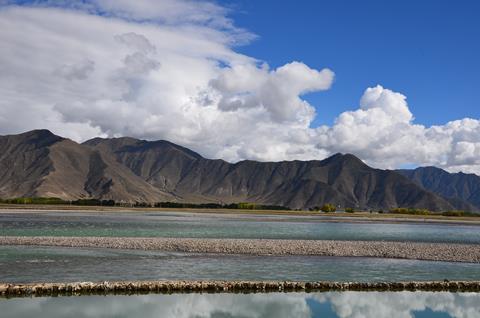Microorganisms are essential to grassland soil ecosystems and play a critical role in biogeochemical cycles. Microbial communities can be classified into distinct ecological groups based on common life-history traits, which greatly benefits the understanding of processes in highly heterogeneous microbial communities.

However, the understanding of climate-dependent life history strategies and driving mechanisms of microbial community assembly in riparian grasslands is very limited.
Researchers from the Wuhan Botanical Garden of the Chinese Academy of Sciences (CAS) investigated the differences in the life history strategies of abundant and rare bacteria in riparian grassland soils of the Qinghai-Tibet Plateau under different climatic conditions and their effects on the composition, assembly processes, and functionality of the microbial communities.
Life history strategies
The results showed that the abundant bacteria of the Qinghai-Tibet Plateau grassland soils in the Lhasa and Nyang watersheds exhibited different life history strategies due to pronounced differences in climate.
The abundant bacteria in the humid and warm climate of the Nyang River watershed were more characterized by the r-strategy (proteobacteria-dominated), while the abundant bacteria in the arid and harsh climate of the Lhasa River were more characterized by the K strategy (acidobacteria-dominated).
The different life history strategies of these bacterial communities resulted in different community compositions, assembly processes, coexistence patterns, and ecological roles of soil bacteria in the two different riparian grasslands.
Environmental selection
The community assembly and niche width results suggested that the bacterial community in the Lhasa region was more susceptible to environmental selection than that in the Nyang region.
In addition, the competitive potential within bacterial communities was higher, and abundant bacteria in the Lhasa region had stronger cooperative potential and greater metabolic capacity than those in the Nyang region.
This is the first study to investigate the life history strategies of abundant vs. rare bacteria. It shows that differences in life history strategies of abundant bacteria are much more significant than those of rare bacteria.
Climate change
This research enlightens the life history strategies of bacteria of different abundance in the context of global climate change and how they maintain biogeochemical cycles in riparian grassland ecosystems.
The results were published in Science of the Total Environment entitled ”The unique climate shapes distinct life-history traits of abundant bacteria in Tibetan plateau grassland soil.”
This work was supported by the Starting Research Fund and Opening Research Fund from the Key Laboratory of Aquatic Botany and Watershed Ecology of CAS.







No comments yet